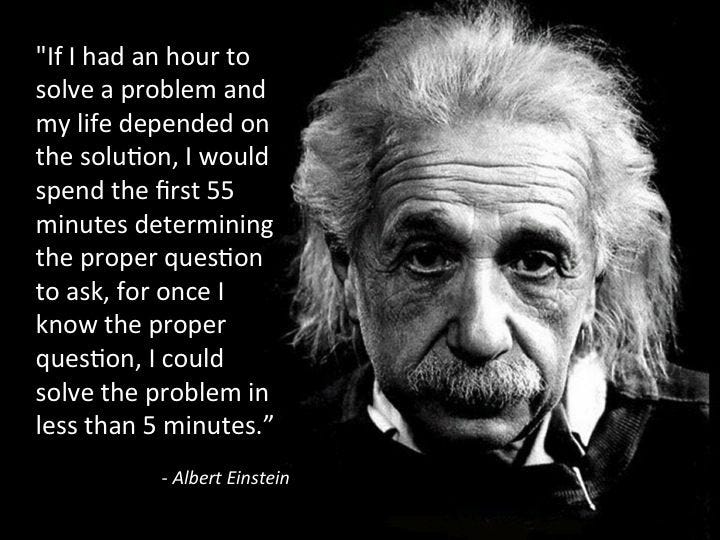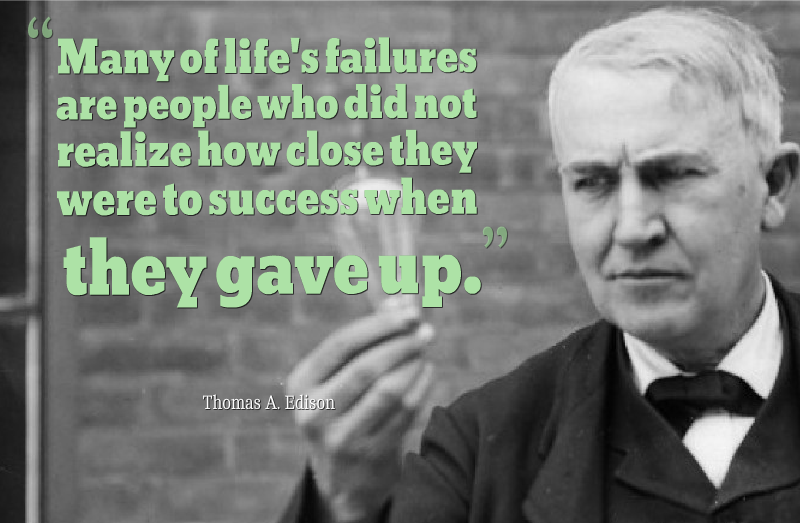Defining the strategic problem
It sometimes feels that in life and in business …
‘we’re on the road to nowhere.’
“We’re on a road to nowhere. Come on inside. Taking that ride to nowhere. We’ll take that ride. I’m feeling okay this morning, and you know. We’re on the road to paradise. Here we go, here we go.”
Talking Heads
In the desperation to get to paradise, which sounds pretty cool indeed, we typically rush ahead. We do not put in the critical thinking, research and planning to avoid jumping to wrong conclusions and solutions, that likely do not head anywhere near paradise. More likely one just gets lost and confused.
It seems somewhat counter intuitive that the best way moving forward, is to s…l…o…w … d…o…w…n. Albert Einstein has been attributed, in many variations, as once saying that ifhe had an hour to solve a problem, he would take 55 minutes to define the problem and five in finding a suitable solution. (Although there is no real evidence he actually said it, which is by the by).

Likely the most critical stage in market research and the strategic outcomes it guides, is clear definition of the problem. Market research and other forms of problem solving, are about first asking questions, and asking the right questions is critical in this. Taking time to pause and unpack the hypothesis, barriers, gaps and opportunities prior taking the next step. Rather than a scatter gun of random questions hope to hit a worthwhile answer, or simply jumping to to misguided solutions, slowing down and defining the problem. Identifying the burning platform (More >) as to why a new direction is worthwhile. Defining why progress is critical, and why earlier attempts failed.
There are many approaches to defining the mission, the problem and research hypothesis and questions. What are trying to prove, disprove and clarify Working as a cross discipline teams, workshops to funnel from wider reflection to precision in where the research needs to focus.
Step 1: Establish the need for a solution
Often problems are so convoluted they fail to provide clarity moving forward. Clearly defining the problem in its simplest form possible is critical. Framing the starting point of what we are actually dealing with. For example, delving deeper than the surface problem as to what the core problem actually is. Rather than simply wishing to measure brand awareness, customer service and/or consumer, tighten this to success outcomes such as sales growth, customer retention / advocacy and/or overcoming category failings for product and other innovation.
- What is the basic need?
- What is the desired outcome?
- Who stands to benefit and why?
Step 2: Justify the need
Defining why a solution is required is important. The burning platform, and what is the imperative in not finding a suitable solution and remaining status quo. Often strategic market research is triggered at a Board and/or senior executive level. Sales have plateaued, are in decline or product lines are slipping and/or alternatives are emerging and will inevitably offer better to customers and the wider market. Strategic objectives have been set, that seem unrealistic with the current business model. Unrealistic targets create cultural stress, and can deflate staff retention and productivity without a clear path. While the future vision may seem wonderful, there may be no clear path to achieving this. Knowing the desired destination defines aligned priorities.
- Is the effort aligned to the strategy?
- What are the desired benefits for the company, and how to measure?
- How will we ensure a solution is implemented?
Step 3: Contextualise the problem
Reflecting on lessons learnt from past efforts, history as well as organisation and category failings is critical. This is likely to include lessons from previous attempts to resolve, and where barriers were hit in doing so. Often organisations are stuck in a perpetual loop of introspective rumination on strategic realities, gossip and excuses as to why strategic targets are not being hit. Blaming a lack of advertising and/or higher prices for soft sales, when the reality may be a mediocre product. A failedmarketing campaign may not be the campaign, but insufficient investment in the right media mix. Attempts to offer a new product or service extension may be because the focus was wrong.
Those who cannot remember the past, we are condemned to repeat it.
George Santayana
What approaches have we tried?
What have others tried?
What are the internal /external constraints on implementing a solution?
Step 4: Write the problem statement
This is about what the organisation has learned, through the earlier discussion, and helps clearly define the ‘problem’ and engage stakeholders. Allowing time to slow down, reflect and conceptualise is vital in the epiphany moment that clearly outlines the problem, the hypothesis, and this can provide the necessary precision as to where research and the solutions that come from this emanate. Such a problem statement allows for defining of research questions, and filtering of research analysis findings and solutions to those aligning to the true problem, overarching strategy, vision and mission.
- Is the problem actually many problems? Where are the priorities?
- What requirements must a solution meet?
- How might we go about solving the problem?
…
An organisation’s strategy may be a hypothesis that is constantly adjusted, from ongoing learning and focus, rather than a scatter gun strategy that makes it easy to get lost on the way to paradise. A vision to solve the problem.
“What is new is the idea that closing the gap between strategy and execution may not be about better execution after all, but rather about better learning.”
HBR 2017 Your Strategy Should Be a Hypothesis You Constantly Adjust
In this fast paced word of rapid sprint, prototyping, agile reactivity, the answer to solving our key strategic challenges and achieving outcomes from growth to positive behaviour change, is to slow down and define the actual problem clearly prior to jumping to conclusions and solutions.
“Most companies aren’t sufficiently rigorous in defining the problems they’re attempting to solve and articulating why those issues are important. Without that rigor, organizations miss opportunities, waste resources, and end up pursuing innovation initiatives that aren’t aligned with their strategies.”
HBR 2012 Are You Solving the Right Problem?





